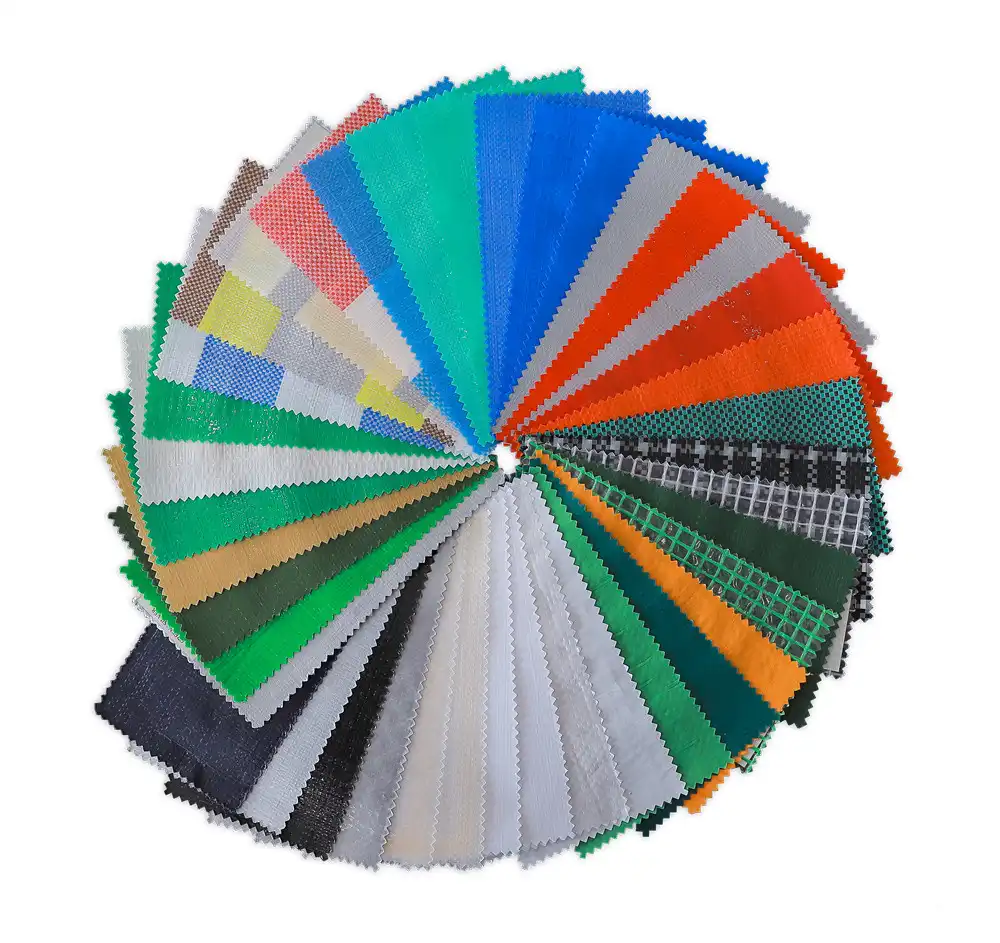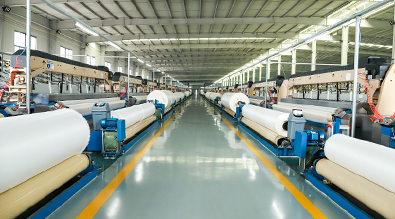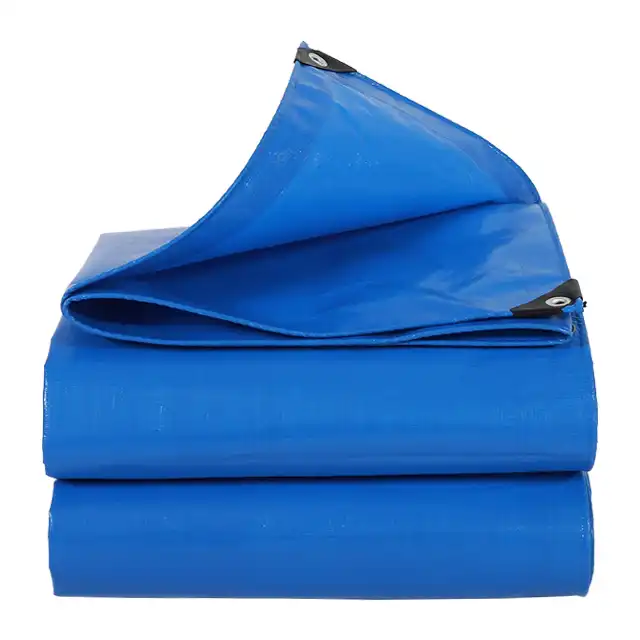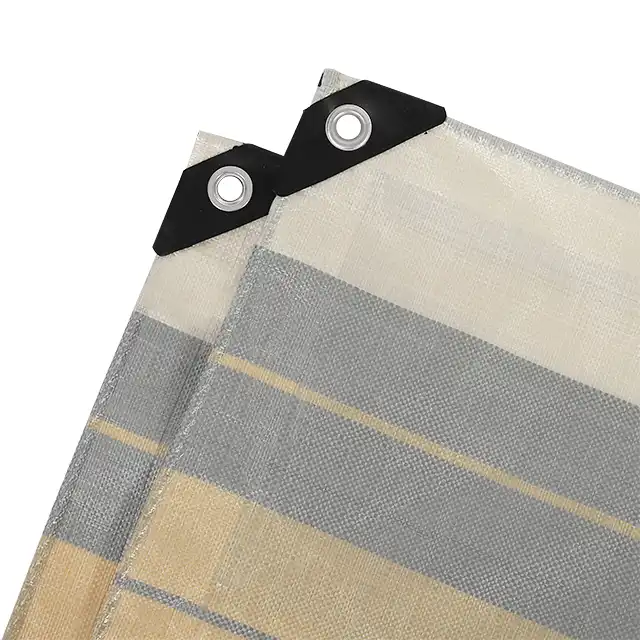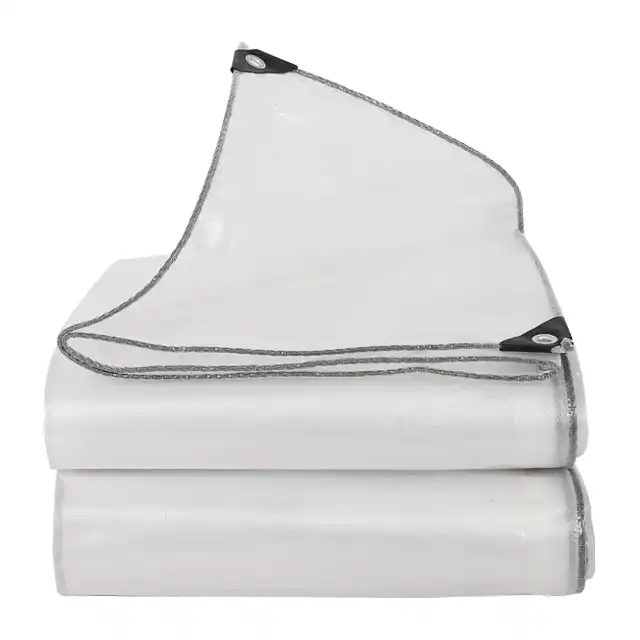Choosing Tarpaulins for Different Climate Conditions
Picture this devastating scenario: your valuable equipment sits exposed under harsh weather conditions, gradually deteriorating while standard covers fail to provide adequate protection. Whether facing scorching desert heat, torrential monsoon rains, or bone-chilling arctic winds, selecting the wrong tarpaulin can result in thousands of dollars in damages and operational downtime. This comprehensive guide addresses the critical challenge of matching tarpaulin specifications to specific climate demands, ensuring your investments remain protected regardless of environmental extremes.
Understanding Climate-Specific Tarpaulin Requirements
 Climate considerations form the foundation of effective tarpaulin selection, as different environmental conditions present unique challenges that demand specific material properties and construction techniques. Temperature fluctuations, precipitation patterns, wind speeds, humidity levels, and solar radiation intensity all significantly impact tarpaulin performance and longevity. Professional tarpaulin selection requires comprehensive analysis of local climate data, seasonal variations, and extreme weather patterns to ensure optimal protection throughout the product lifecycle. Modern polyethylene tarpaulin technology has revolutionized weather protection capabilities, incorporating advanced materials science to address specific climate challenges. High-density polyethylene (HDPE) woven fabrics combined with low-density polyethylene (LDPE) coating systems create superior barrier properties against moisture penetration while maintaining flexibility across temperature ranges. These engineered tarpaulin systems provide exceptional durability when properly matched to climate-specific requirements, offering protection investments that span multiple seasons of reliable service.
Climate considerations form the foundation of effective tarpaulin selection, as different environmental conditions present unique challenges that demand specific material properties and construction techniques. Temperature fluctuations, precipitation patterns, wind speeds, humidity levels, and solar radiation intensity all significantly impact tarpaulin performance and longevity. Professional tarpaulin selection requires comprehensive analysis of local climate data, seasonal variations, and extreme weather patterns to ensure optimal protection throughout the product lifecycle. Modern polyethylene tarpaulin technology has revolutionized weather protection capabilities, incorporating advanced materials science to address specific climate challenges. High-density polyethylene (HDPE) woven fabrics combined with low-density polyethylene (LDPE) coating systems create superior barrier properties against moisture penetration while maintaining flexibility across temperature ranges. These engineered tarpaulin systems provide exceptional durability when properly matched to climate-specific requirements, offering protection investments that span multiple seasons of reliable service.
-
Hot Climate Tarpaulin Selection
Hot climate environments demand tarpaulin solutions with exceptional UV resistance, heat stability, and thermal protection capabilities. Prolonged exposure to intense solar radiation can rapidly degrade inferior tarpaulin materials, causing brittleness, color fading, and structural failure within months of deployment. Professional-grade tarpaulin products incorporate advanced UV treatment systems, typically ranging from 3% to 7% UV stabilizer concentration, providing extended protection against harmful solar radiation while maintaining material integrity. Specialized high-strength polyethylene yarn construction becomes essential in hot climate applications, where thermal expansion and contraction cycles create significant mechanical stress on tarpaulin structures. Superior tarpaulin designs utilize yarn thickness ranging from 400D to 2500D, providing enhanced tensile strength and dimensional stability under temperature extremes. Heat-resistant coatings and specialized weave patterns further enhance thermal performance, ensuring reliable protection even during peak summer conditions when temperatures exceed 40°C for extended periods.
-
Cold Climate Tarpaulin Performance
Arctic flexibility represents a critical performance parameter for tarpaulin applications in cold climate conditions, where traditional materials become brittle and prone to cracking at sub-zero temperatures. Tarp flexibility is especially significant under cold conditions, requiring specialized material formulations that maintain pliability and strength even when exposed to temperatures below -30°C. Advanced polyethylene tarpaulin systems incorporate anti-freezing additives and flexible polymer chains that resist cold-weather embrittlement. Cold climate tarpaulin applications also demand superior tear resistance and impact strength, as ice formation, snow loading, and thermal shock create challenging operational conditions. High-quality tarpaulin products feature reinforced construction with enhanced mesh count specifications, typically ranging from 10x10 to 14x14, providing exceptional structural integrity under winter stress conditions. Specialized coating systems ensure waterproof performance remains intact despite freeze-thaw cycles that would compromise inferior tarpaulin products.
Premium Tarpaulin Materials for Extreme Weather Conditions
Material selection forms the cornerstone of climate-appropriate tarpaulin performance, with different polymer systems offering distinct advantages under specific environmental conditions. Polyethylene tarpaulin technology continues to evolve, incorporating advanced material science innovations that enhance durability, flexibility, and protective capabilities across diverse climate applications. Understanding material characteristics enables informed selection decisions that optimize protection while minimizing long-term replacement costs. PVC Tarpaulin: Best for UV resistance, extreme heat, and waterproofing, while polyethylene alternatives provide excellent cost-effectiveness and versatility across moderate climate conditions. Advanced tarpaulin manufacturing processes create laminated structures combining woven fabric cores with protective coating systems, resulting in materials that exceed traditional tarpaulin performance limitations while maintaining affordability for commercial applications.
-
Heavy-Duty Polyethylene Tarpaulin Systems
Professional heavy-duty tarpaulin construction utilizes high-density polyethylene woven fabrics laminated with protective coating systems on both surfaces, creating superior barrier properties against environmental penetration. These engineered tarpaulin systems incorporate tear-resistant construction, waterproof performance, and enhanced UV protection capabilities essential for demanding climate applications. Weight specifications ranging from 65gsm to 280gsm accommodate diverse protection requirements, from lightweight temporary covers to permanent structural applications. Advanced tarpaulin manufacturing incorporates specialized weaving techniques utilizing Korea-imported automatic water-jet looms, producing fabric widths from 1.5m to 5m without joints or seams that could compromise weather resistance. Professional coating processes apply uniform LDPE layers using precision machinery, ensuring consistent waterproof performance and enhanced durability. These manufacturing innovations result in tarpaulin products capable of withstanding extreme weather conditions while maintaining dimensional stability and protective effectiveness throughout extended service periods.
Climate Zone Tarpaulin Selection Strategies
Different climate zones present unique environmental challenges requiring specialized tarpaulin solutions tailored to regional weather patterns and seasonal variations. Tropical climates demand enhanced UV protection and moisture resistance, while temperate regions require balanced performance across temperature fluctuations and precipitation cycles. Desert environments necessitate extreme heat resistance and dust protection, whereas coastal areas need enhanced corrosion resistance and wind loading capabilities. Comprehensive climate analysis involves evaluating temperature ranges, precipitation patterns, wind speeds, humidity levels, and solar radiation intensity throughout annual cycles. Professional tarpaulin selection considers not only average conditions but also extreme weather events that could compromise inadequate protection systems. This analytical approach ensures tarpaulin specifications meet or exceed environmental demands while providing reliable long-term performance.
-
Tropical Climate Tarpaulin Requirements
Tropical climate applications demand tarpaulin solutions with exceptional mold resistance, enhanced UV protection, and superior moisture management capabilities. High humidity levels create challenging conditions for organic materials, while intense solar radiation and frequent precipitation cycles test protective system durability. Professional-grade polyethylene tarpaulin products incorporate anti-mildew treatments and moisture-resistant construction that prevents degradation under tropical conditions. Specialized tarpaulin designs for tropical applications feature enhanced drainage systems, reinforced attachment points, and wind-resistant construction capable of withstanding monsoon conditions. Advanced UV treatment systems protect against tropical sun intensity, while breathable construction options prevent condensation accumulation that could damage protected equipment. These comprehensive tarpaulin solutions provide reliable protection throughout tropical wet and dry seasons while maintaining structural integrity under challenging environmental conditions.
-
Temperate Climate Versatility
Temperate climate regions require versatile tarpaulin solutions capable of providing reliable protection across diverse seasonal conditions, from summer heat and thunderstorms to winter snow loading and freeze-thaw cycles. All-season tarpaulin designs incorporate balanced material properties that maintain effectiveness across temperature ranges while providing consistent waterproof performance. Choose all season tarps if you require all-year protection; they mix waterproofing, UV protection, and wind resistance, ensuring comprehensive environmental protection. Professional temperate climate tarpaulin selection emphasizes durability and cost-effectiveness, as these applications typically require long-term deployment with minimal maintenance. Enhanced tear resistance, superior UV protection, and flexible construction ensure reliable performance throughout multiple seasonal cycles. Specialized attachment systems and reinforced construction accommodate wind loading variations while maintaining secure protection under diverse weather conditions common in temperate regions.
Professional Tarpaulin Applications and Industry Standards
Industrial tarpaulin applications demand rigorous performance standards that exceed consumer-grade requirements, incorporating specialized testing protocols and quality assurance measures. Professional applications include construction site protection, agricultural equipment coverage, transportation load securing, and temporary structural systems requiring reliable environmental protection. These demanding applications necessitate tarpaulin products with verified performance characteristics and comprehensive warranty coverage. Quality management systems ensure consistent tarpaulin performance through comprehensive testing protocols evaluating tensile strength, tear resistance, UV stability, waterproof integrity, and dimensional stability. ISO 9001:2015 certification provides third-party verification of manufacturing processes and quality control systems, ensuring professional tarpaulin products meet international performance standards. Advanced testing equipment evaluates material properties under simulated environmental conditions, verifying performance claims before product deployment.
-
Construction and Industrial Applications
Construction industry tarpaulin applications require superior durability and weather resistance to protect valuable equipment, materials, and work areas from environmental damage. Heavy-duty tarpaulin systems must withstand construction site conditions including mechanical abuse, chemical exposure, and extreme weather events while maintaining protective integrity. Professional construction tarpaulin products feature reinforced construction, enhanced tear resistance, and specialized attachment systems designed for temporary but critical protection applications. Industrial tarpaulin applications encompass diverse protection requirements from equipment covers to temporary structural systems, each demanding specific performance characteristics. Impermeable tarpaulin systems protect sensitive equipment from moisture penetration, while breathable options prevent condensation in enclosed applications. Specialized fire-retardant treatments enhance safety in industrial environments where ignition sources present additional protection challenges beyond basic weather resistance.
Conclusion
Selecting appropriate tarpaulin solutions for specific climate conditions requires comprehensive analysis of environmental challenges, material capabilities, and application requirements to ensure optimal protection performance and cost-effectiveness throughout the product lifecycle.
Cooperate with Linyi Shengde Plastic Co., Ltd.
Linyi Shengde Plastic Co., Ltd. stands as the leading China tarpaulin manufacturer with over 20 years of proven expertise in producing high-quality PE tarpaulin solutions for diverse climate applications. Established in 2003 with registered capital of CNY 80 million, our company operates across 60,000 square meters of advanced manufacturing facilities, incorporating 30+ high-tech extruding machines, 400+ Korea-imported water-jet looms, and professional coating systems capable of producing fabric widths up to 5 meters without joints.
Our reputation as a trusted China tarpaulin supplier stems from rigorous quality management systems including ISO 9001:2015 certification and comprehensive testing protocols ensuring every tarpaulin meets international performance standards. With partnerships extending to UNHCR, IOM, ICRC, and UNICEF, our tarpaulin products have proven reliable across 30+ countries including extreme climate conditions in Ethiopia, Saudi Arabia, and Canada. Our advanced R&D capabilities have developed breakthrough innovations including ultra-wide braiding machines, fire-prevention treatments, and enhanced waterproof technologies.
As your preferred China tarpaulin wholesale partner, we offer customizable solutions ranging from 65gsm to 280gsm weight specifications, UV treatment levels from 1% to 7%, and comprehensive color options to meet specific climate requirements. Our monthly production capacity exceeds 4,000 metric tons, ensuring reliable supply for large-scale projects while maintaining competitive tarpaulin prices. Whether seeking high quality tarpaulin for construction, agriculture, or industrial applications, our experienced team provides expert consultation and rapid quotation services.
Contact our professional team today at info@shengdetarp.com to discuss your climate-specific tarpaulin requirements and discover how our proven expertise can protect your valuable investments across any environmental conditions.
FAQ
Q: What weight tarpaulin is best for extreme weather conditions?
A: Heavy-duty tarpaulins ranging from 180gsm to 280gsm provide optimal protection for extreme weather, offering enhanced tear resistance and durability compared to lighter alternatives.
Q: How long do UV-treated tarpaulins last in hot climates?
A: Professional UV-treated tarpaulins with 5-7% UV stabilizer concentration typically provide 3-5 years of reliable service in hot climate conditions with proper installation and maintenance.
Q: Can polyethylene tarpaulins withstand freezing temperatures?
A: High-quality PE tarpaulins with arctic flexibility treatments maintain pliability and strength down to -30°C, preventing cold-weather cracking and material failure.
Q: What mesh count specification is recommended for windy conditions?
A: Tarpaulins with 12x12 to 14x14 mesh count provide superior wind resistance and structural integrity for applications in high-wind climate zones.
References
1. "Tarpaulin Material Properties and Weather Resistance" by Industrial Fabric Association International, Technical Standards Committee
2. "Climate-Specific Protective Cover Selection Guidelines" by American Society for Testing and Materials, Weather Protection Division
3. "Polyethylene Tarpaulin Performance in Extreme Environmental Conditions" by Materials Science Research Institute, Polymer Applications Laboratory
4. "Professional Tarpaulin Standards and Quality Management Systems" by International Organization for Standardization, Industrial Textiles Working Group
